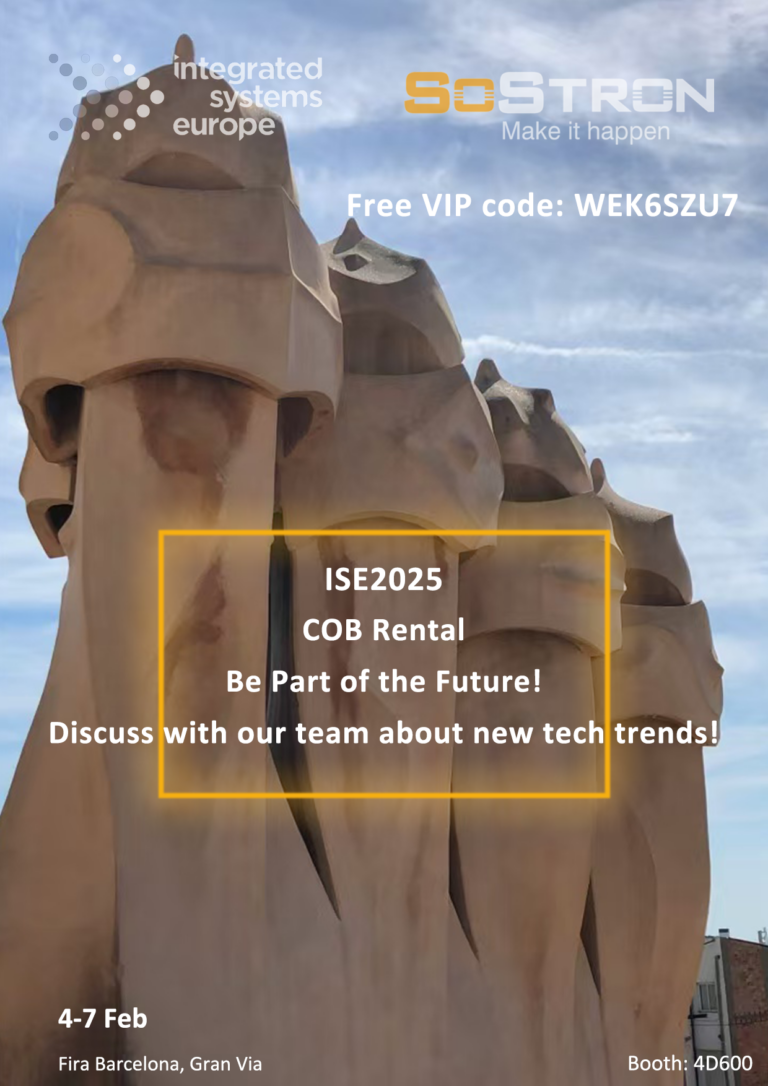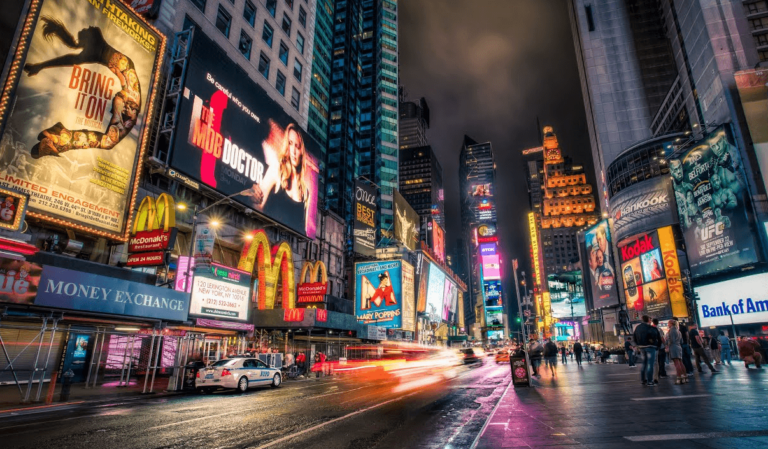Table of Contents
- What is a Spherical LED Screen?
- Characteristics of Spherical LED Displays
2.1 360-Degree Viewing Angle
2.2 High Definition
2.3 Seamless Splicing
2.4 Flexible Content Playback - Technological Development of Spherical LED Displays
3.1 Pixel Density and Resolution
3.2 Content Management Systems - Steel Structure of Spherical LED Displays
4.1 Structural Design
4.2 Material Selection
4.3 Installation Methods
4.4 Maintenance Considerations - Application Scenarios of Spherical LED Displays
5.1 Science Museums and Planetariums
5.2 Commercial Displays and Brand Promotion
5.3 Entertainment and Arts Venues - Market Development Trends and Prospects
6.1 Technological Innovation and Future Development
6.2 Installation and Maintenance of Spherical LED Displays
6.3 Types and Technical Features of Spherical LED Displays
6.4 Growth in Market Demand
1. What is a Spherical LED Screen?
A spherical LED display is a type of display device that combines LED technology with a unique three-dimensional structure, often used to showcase scenes that require a 360-degree view. Spherical displays not only break through the limitations of traditional flat screens but also attract viewers’ attention with their distinctive appearance. Particularly in public venues, technology exhibitions, and entertainment events, spherical LED screens have become a visual hallmark, representing the future direction of display technology.
The application scenarios for spherical LED displays are extensive; they are used in science museums to exhibit astronomical phenomena, in commercial displays to capture consumer attention, and as stage backdrops to enhance performance effects. Regardless of the occasion, the immersive visual experience provided by these screens offers audiences an unprecedented sensory delight. What is an immersive exhibition? What LED displays will be used?
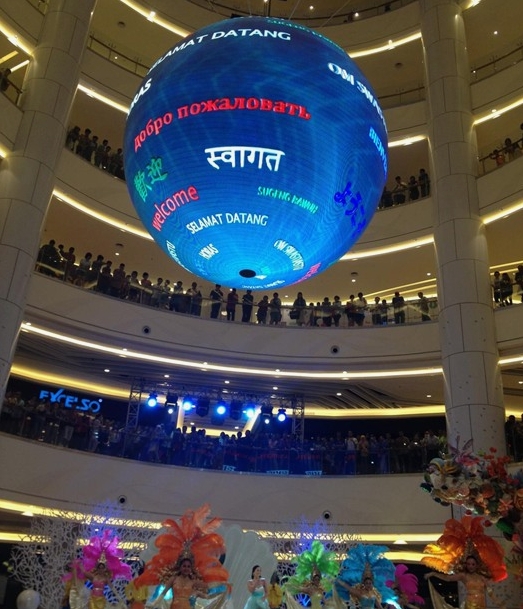
2. Characteristics of Spherical LED Displays
2.1 360-Degree Viewing Angle
Unlike traditional flat displays, spherical LED screens provide a 360-degree viewing angle. Regardless of the viewer’s position, clear images are visible from all angles. This all-around visibility makes spherical screens particularly suitable for occasions that require panoramic effects.
2.2 High Definition
With the continuous advancement of LED technology, the resolution of spherical LED screens has significantly improved, enabling high-definition images to be displayed even on complex three-dimensional surfaces. This clarity is crucial for showcasing realistic images and videos.
2.3 Seamless Splicing
The modular design of spherical LED displays allows for seamless splicing of individual LED modules, creating a complete spherical surface. This seamless integration not only enhances the aesthetic appeal of the screen but also ensures the continuity of the displayed content.
2.4 Flexible Content Playback
Spherical LED screens can play various content formats, including videos, images, and real-time data, according to needs. The content management system (CMS) allows for the flexible switching of playback content based on scene requirements, providing more versatile display solutions.
3. Technological Development of Spherical LED Displays
3.1 Pixel Density and Resolution
Enhancing pixel density and resolution is a key challenge in spherical displays. Due to the curved surface, traditional rectangular pixel arrangements cannot be directly applied, necessitating specially designed pixel layouts and high-precision calibration techniques to ensure consistent display quality. Take you to know the pixel density and resolution of LED display.
3.2 Content Management Systems
To fully utilize the features of spherical LED screens, content management systems (CMS) have become essential. Advanced CMS not only support multiple content formats but also allow for remote control and automatic updates, keeping the displayed content fresh and interactive.
4. Steel Structure of Spherical LED Displays
4.1 Structural Design
The steel structure of spherical LED displays employs a spatial truss design, ensuring even weight distribution and the ability to withstand external forces such as wind and earthquakes. Precise design and mechanical calculations are crucial for ensuring structural safety and stability.
4.2 Material Selection
To ensure the strength and durability of the steel structure, high-strength steel or aluminum alloys are typically used. These materials are not only lightweight but also possess strong corrosion resistance, suitable for both indoor and outdoor installations.
4.3 Installation Methods
Installing a spherical LED display requires consideration of its size, weight, and site environment. Professional installation teams must conduct precise calculations to ensure the safety and aesthetic quality of the installation.
4.4 Maintenance Considerations
For ease of future maintenance, the design of the steel structure needs to account for module disassembly and repair space. Modular designs not only simplify the installation process but also reduce long-term maintenance costs.
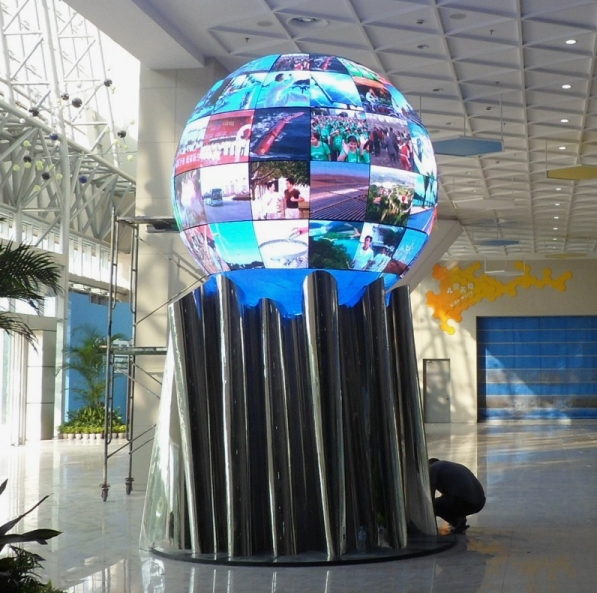
5. Application Scenarios of Spherical LED Displays
5.1 Science Museums and Planetariums
Spherical LED displays are particularly well-suited for science museums and planetariums, used to showcase astronomical phenomena such as the universe, stars, and Earth. The spherical structure enhances the presentation of astronomical images in three-dimensional space, enriching the audience’s immersive experience.
5.2 Commercial Displays and Brand Promotion
In commercial displays and brand promotion, spherical LED screens can significantly attract consumer attention due to their unique visual effects. They are commonly used in luxury brands, automobile exhibitions, and major events as highlights of brand image. Provide you with the price range of commercial LED display.
5.3 Entertainment and Arts Venues
Many stage performances and art exhibitions increasingly adopt spherical LED displays as core devices for backgrounds and stage effects. Their dynamic display effects deliver a strong visual impact to the audience.
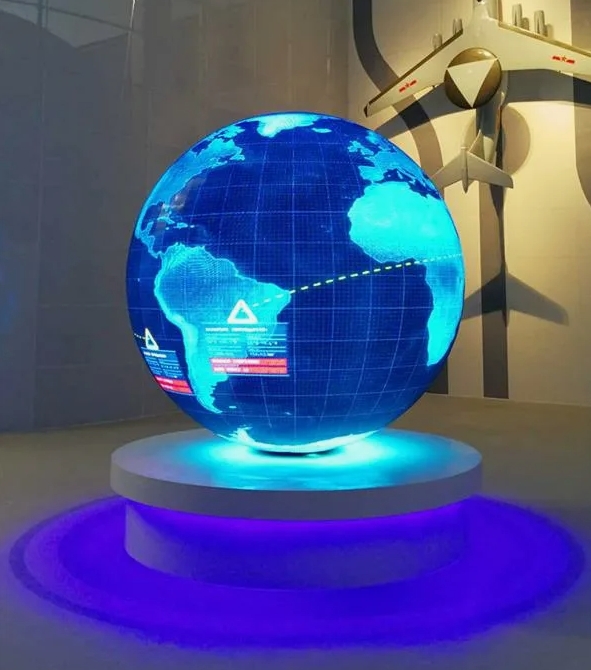
6. Market Development Trends and Prospects
6.1 Technological Innovation and Future Development
With continuous technological advancements, it is reasonable to believe that spherical LED displays will play a unique value in more fields. In this era of infinite possibilities, the emergence of spherical LED displays not only enriches our visual experiences but also brings new display methods and innovative opportunities to various industries.
6.2 Installation and Maintenance of Spherical LED Displays
The structure of outdoor LED displays includes a steel framework, decorative edging for the display screen, fastening components, concrete structures, and ventilation and cooling devices. During the production and installation of the steel structure, attention must be paid to rust removal, calibration, welding, and painting, adhering to the requirements of the “Steel Structure Design Code” and the “Steel Structure Engineering Construction and Acceptance Code.”
6.3 Types and Technical Features of Spherical LED Displays
Three types of spherical LED screens have emerged in the market: watermelon rind LED spherical screens, triangular LED spherical screens, and six-sided panoramic LED spherical screens. Each type’s production technology has been patented, and their design and construction are complex, but they provide unique visual effects and application advantages. Take you to know the creativity: LED triangle screen.
6.4 Growth in Market Demand
As market demand for innovative visual experiences continues to increase, the application fields of spherical LED displays are also expanding. Whether in retail, public art exhibitions, or entertainment and education sectors, spherical displays are gradually becoming one of the mainstream display technologies.
Conclusion
Spherical LED displays not only represent the latest trends in display technology but also provide viewers with a unique visual experience. By understanding their characteristics, structural design, technological development, and application scenarios in detail, it is foreseeable that spherical LED displays will play an increasingly important role in the future of display and advertising fields.


